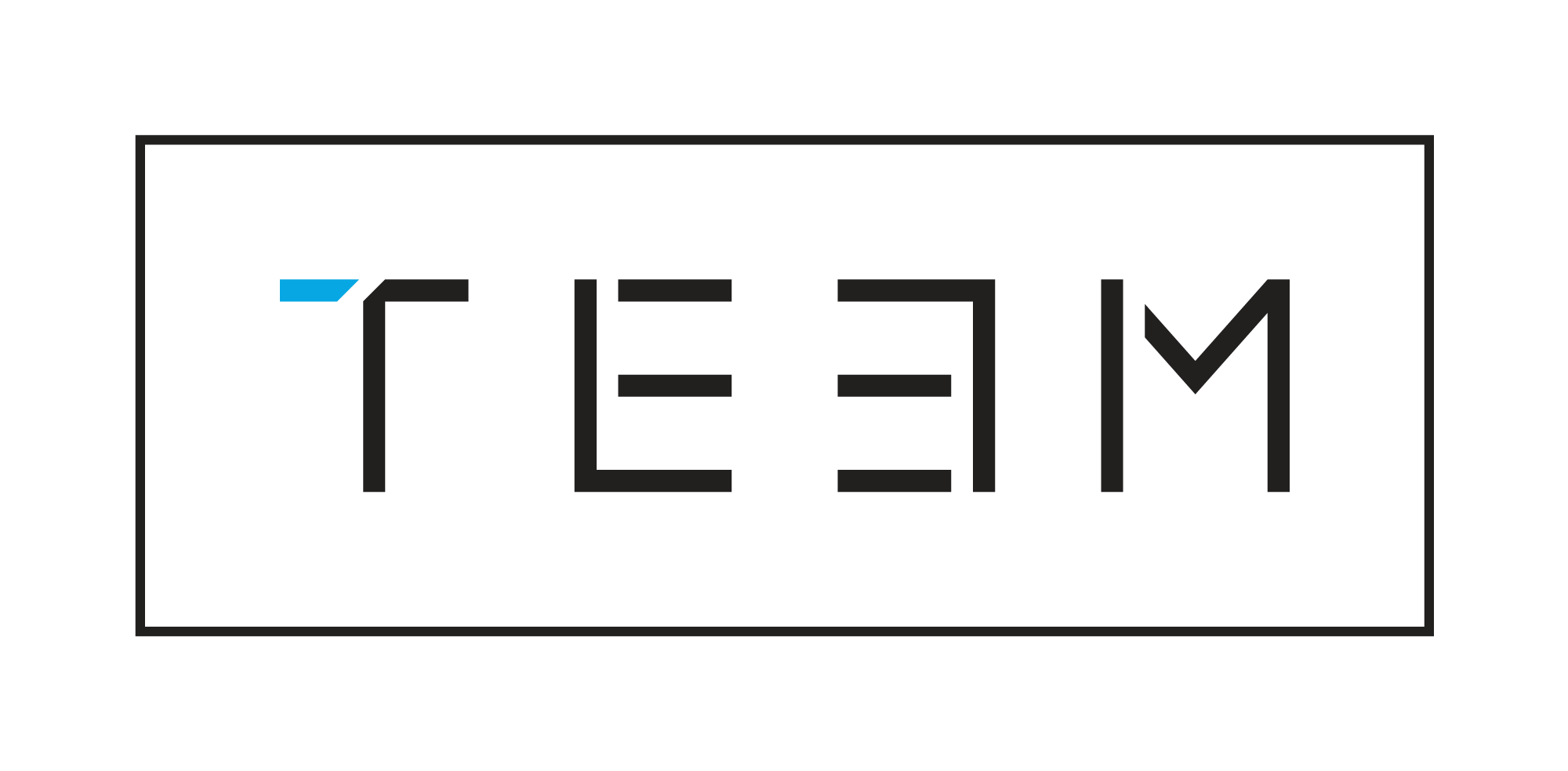Here’s what it means for their clients and employees, and what TEEM is doing about it.
I enjoy solving business problems.
I enjoy marketing not because I get warm and fuzzy from getting likes or clicks, but because I like learning about a client’s business situation and identifying ways to help them outsmart their competitors, get their audience to take action, and reach their goals. Marketing for me is a means to an end — a toolkit of tactics to achieve business objectives.
 I found my way to TEEM because of this. When I moved to Denver and was researching the local marketing agency landscape, I read about TEEM and thought it was a really interesting agency model that solved a lot of the issues that I had experienced in other small shops.
I found my way to TEEM because of this. When I moved to Denver and was researching the local marketing agency landscape, I read about TEEM and thought it was a really interesting agency model that solved a lot of the issues that I had experienced in other small shops.
As marketers, we spend most of our time listening to other business’s problems and helping them be better, so it intrigued me to find an agency that offered the same lucidity and fresh-take on their own business situation.
This post is my perspective on the struggles that small agencies encounter, and how there may be a better way to function as an agency.
The Problem With The Small Agency Business Model
I started as an intern at my first agency, along with a talented design intern named Kay. We both worked hard, showed we could handle more, and eventually were offered full-time positions. We both thought, “Look at us, we’re doing it! We got our foot in the door and are ready to kick ass at this agency.”
Kay was hired full-time in December, at a time when we had a lot of design work to be done. Two months later, she was let go because we didn’t have enough billable design work to fill her plate. It sucked. Kay was a really talented designer, worked hard to get her job, and lost the job due to nothing in her control — it was solely about the amount of design work that was available.

Photo by Headway on Unsplash
Looking back, I’m disappointed in my bosses who hired Kay – who were either naive about the volume of design work in the pipe, or careless about their responsibility as an employer, or both. But what I’ve realized is that this is very much a foundational issue with the traditional structure of small marketing agencies.
Small traditional marketing agencies likely have a couple of account people, a designer or two, a developer, and a copywriter. When they win a big account and try to handle the workload, they are presented with a couple options:
- Ask their current team to shoulder the load to get through the crunch. The designer might need to work 60 hours a week, but they think “Heck, we’ll bring in some beer and we’ll be through this in a couple weeks”.
- Hire up to handle the workload. This isn’t a great option, because it can take awhile to hire the right person and they can’t test them out before they start on this new client work.
- Bring on a freelancer to cover some of the work, but then it’ll cut into their margins and they usually tell themselves, “We’ve been working on this brand for so long, it’s really best if we just keep it in our designer’s hands.”
One of my early roles in an agency was as Project Manager in charge of smoothing over these bumps and identifying how to get the work done. I can’t tell you how many times I had this discussion:
Account Executive: “Client just signed for Project X, when can we start?”
Me: “.. (looking through current resource allocation).. Uh, in 2 months?”
AE: “……. it’s almost selling season though, and it needs to be live in 1 month.”
Me: “Okay, well I could pull it forward, but then we’ll have to push back the work on Project Y and Project Z — or I could pull it forward, but then Amy will be pulling 60 hours per week.”
AE: “Ughhh, okay can we push back Project Y and we’ll just do 50’s for a couple weeks to get through this crunch?”
Spoiler Alert: You’re not getting through the crunch when this happens once a month.
What I’m saying is that agency work will always fluctuate. It’s dynamic. it grows, and sometimes it contracts. A project timeline slides back 3 weeks and now it’s layering right on top of that other website launch.
The issue is that small agencies are tackling this dynamic problem with a static solution.
How TEEM Offers a Better Model
As I’m sure you know, TEEM has a unique agency structure. We have a small nucleus of account staff, operations, and strategy, and have a talent network for creative and technical roles like design, content, development, photography, etc. This allows us to meet a client’s dynamic problem with a dynamic solution: We’ll source the right people on the project and scale up or down as needed.
For Clients:
An agency’s main goal should be to offer the best experience and service for their clients. As a client, when you work with an agency who has a dynamic model built on freelancers you get the following benefits:
The right skills and experience for your project or industry.
When you work with a static agency you get access to the people in their office, which means your talent access is limited to their experience. An agency built on freelancers can tap the right people for your project.
For example: You need a Shopify website? Great, we’ll line up a web developer who has built many Shopify sites. Your customers are outdoorsy dog-owners? We’ve got just the passionate industry-savvy designer to build your brand.
What this also means is that the agency you hire isn’t trying to sell you on the services that are their sweet spot, they understand your project needs and assemble the team that can best deliver success for you.
The project happens on your timeline, not theirs.
You have objectives and a timeline. Whether it’s a tradeshow coming up, a product to launch, or your peak selling season is coming up in 2 months and you need to get Facebook ads launched… you absolutely cannot have your agency partner—the team meant to make these things happen—tell you they can’t meet your deadline. Or worse, tell you they can meet the deadline and then fail to deliver.
But that’s what happens when you work with a small static agency who is juggling other client’s projects, their staff’s vacations, and trying to keep their work week under 50 hours.
On the flip side, dynamic agencies are built to have their workload and workforce ebb and flow based on demand, which means they can tell you “Yes” more often than static agencies. Flexibility allows the agency to work on your timeline, not the other way around.

Photo by Annie Spratt on Unsplash
For Freelancers:
I’d like to start by listing the benefits that freelancers get from contracting over a salaried position:
Work on projects you say yes to.
If the client or project doesn’t interest you, you don’t need to do it. And if you’re busy this month, you don’t have to take on any more work than you want. That’s not the case if you’re a full-time salaried employee at a traditional agency and your projects are dictated to you.
Get paid what you’re worth.
In a free market, freelancers set their own rates, and if they are talented and the value is there, an agency will pay it. This means they can make significantly more money than a salaried employee, have a more flexible schedule, and just be happier. Happier creatives do better work.
Having an agency-partner means you can focus on what you do best.
Not only does nurturing a relationship with an agency get you access to larger projects than you could win on your own, but you also don’t need to spend your time doing the dirty-work of freelancing like communicating with clients, project management, chasing invoices, or finding your own talent to fill gaps.
As a freelancer, you get a number of benefits by working with a dynamic agency like TEEM over a traditional agency. TEEM knows our main advantage is our talented freelancer network, so we make time to get together with them during Third Thursday Happy Hours and Talent Lunches to meet-and-greet prospective freelancers, and to brief our teams properly with a detailed scope of work.
For the Agency:
Staff aren’t asked to do the impossible.
An agency does a disservice to clients and staff when they ask their in-house team to work in platforms they don’t know or exercise capabilities they’re not comfortable in. That’s stressful, and they won’t deliver the best work. For example, if a client wants an experiential trade show booth designed and the agency’s designers are mainly comfortable with brand identity or web design projects, they will struggle and the client won’t get a killer trade show booth.
The same is true for workload. An agency that is well-equipped to bring on freelancers to assist on a large project doesn’t need to ask their internal staff to shoulder the load of everything that walks through the door. Staff can handle a manageable workload, and don’t need to work 60 hours per week when two projects overlap, or work during a vacation because they are the only one at the agency who can build the website.
Reduce overhead costs.
By leveraging a network of freelancers for a significant volume of work, an agency can keep overhead and labor costs low. They don’t need to hire up to cover a couple busy months. They just need to use their network, and when that work is completed and there is less design work to be done, they don’t need to lay off the extra designer they brought on.
This helps alleviate the yoyo hiring habits that static agencies tend to find themselves in.
Learn stronger relationship skills.
An agency that is built on freelancers needs to constantly meet new people, nurture current contractor relationships, and understand how to efficiently and effectively brief new people on a client project. What this does is require the agency’s staff to use their relationship-building muscles and to get in the habit of forming and maintaining deep professional relationships. This also translates to building better client relationships, because a dynamic agency is more ready to form a trusting bond than a static agency where the team seldom talks with people outside of their office.
What Does All This Mean?
Marketing agencies are already realizing that freelancers are a great way to handle auxiliary work. I attended Ad Club CO’s AdDay conference last May to hear from Colorado’s local agency leaders on tactics that work, what’s next for marketing, and the future of agencies. A panel of several agency Founders, Presidents, and Creative Directors were asked “What single trend do you see changing marketing agencies?” Their universal answer: “Freelancers.”
It’s clear that agency leaders recognize the value of freelancers and see potential in how they can be leveraged to achieve some of the benefits listed above.
What they don’t understand yet is that utilizing freelancers isn’t a “nice-to-have” for small agencies, it’s a “must-have” for the business model to work. And freelancers can’t just be a panic tactic to deploy when things get busy. For an agency to effectively leverage freelancers in the tough times, they have to build relationships and foster a collaborative culture in the good times.
TEEM isn’t experimenting with using contractors. And our freelancers aren’t just one-shot labor to help out in a pinch. Our freelancers ARE the team day-to-day. It’s what our agency model is built on, because it allows us to best serve our clients, partners, and staff.

